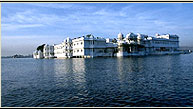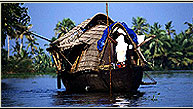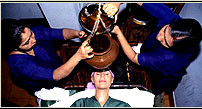-| Kushinagar | -
Location: District Deoria (Uttar Pradesh) - Long 26º 24' E, 83º
55' N

Kushinagar is a revered place of Buddhist pilgrimage 55 kms. away from Gorakhpur.
The ancient name of this place was Kasia that was the capital of Malla tribe.
In the suburb of Kasia, Lord Buddha attained parinirvana and his corporal remains
were cremated. The site of Lord Buddha's death was one of the four principal
centres of Buddhist pilgrimage. The buddhist establishment known as Mahapari-Nirvana
Vihar was clustered around the main nirvana stupa. The nucleus of which could
go back to the Mauryan king Ashoka, fronted by a temple which a large figure
of reclining Buddha, the figure of devotees bearing an inscription in Gupta
brahmi of 4th century AD. The stupa and the temple were brought to light in
1880. The centre of the stupa contained a copper plate placed on the mouth of
a relic casket in the form of a copper vessel with charcoal , cowries, precious
stones and a gold coin of Kumar Gupta I. The copper plate was engraved with
saying that it had been placed by a devotee in the Nirvana chaitya.
The whole area was studded with archaeological remains, of which eight monasteries,
belonging to different periods, with the usual plan have been unearthed. The
establishment continued to be in occupation from 1st century to 10th century
AD. A chapel or shrine not far from the complex, forming a part of monastery
has an image of Lord Buddha in green schist stone with an inscription of a local
Kalchauri chief. Over a distance of a km. to the east of the site, there lies
a large brick stupa, believed to have been erected over the site of Buddha's
cremation. Kushinagar is one of the eight places of Buddhist pilgrimage and
is visited by Buddhist from all over the world.
A temple dedicated to the event Mahaparinirvana, today stands amidst a serene
Sal grove attesting the testimony of Buddhist literature as if still reminiscing
the great demise. The whole of Kushinagar, since the Mahaparinirvana of Lord
Buddha, was turned into a memorial site with stupas including the relic stupas
- Mukuthandhama and Gupta period chaitya and vihara built by the devout kings.
The chinese traveller Fa-Hien, Hiuen Tsang and I -sing visited Kushinagar during
different centuries and recorded a graphic account of the place which later
fell to bad times due to lack of patronage.
The visiting site of Kushinagar falls into three categories – Mahaparinirvana
temple commemorating the place of the great decease with a reclining statue
of Lord Buddha. Mala Kunvar shrine containing a 10th century blue schist image
of Buddha. Ramabhar stupas which is probably the spot where Lord Buddha was
cremated and his relics were divided into eight equal parts.
Apart from this, a Chinese temple, a Buddhist temple, a Tibetian temple and
Indo, Japan and Srilanka Buddhist centres hold significant religious value for
Buddhist pilgrims.




